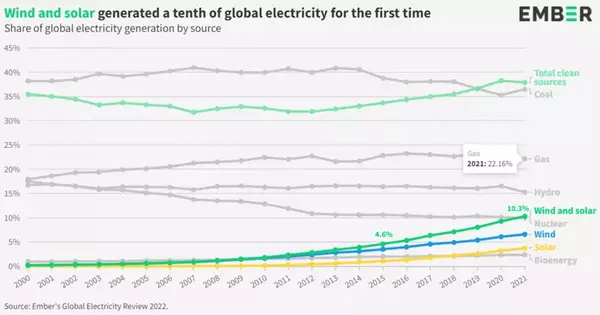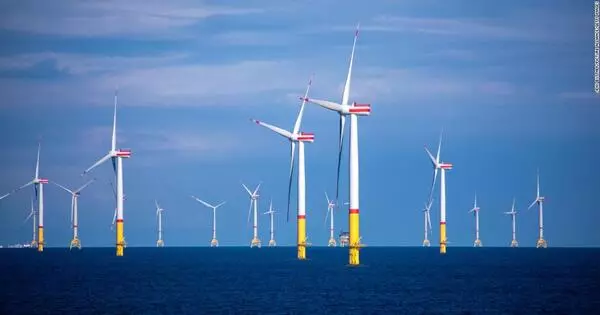- According to the most recent data, wind and solar generated more than 10% of global electricity for the first time in 2021.
- Fifty countries have now achieved the 10% wind and solar milestone, with seven more expected to do so in 2021.
- However, coal-fired electricity increased by 9% in 2021, reaching a new high.
- According to the World Economic Forum, “decoupling” from fossil fuels is more important than ever.
According to the Global Electricity Review 2022, wind and solar generated more than 10% of global electricity for the first time in 2021.
This milestone is 9.3% ahead of 2020, according to Ember, the energy think tank that compiled the report, and double the level of 2015, when the Paris Climate Agreement was signed.

There will be more wind and solar power in the future.
According to Ember, fifty countries have now reached the 10% wind and solar milestone, with seven more expected to do so in 2021. Japan, Vietnam, Mongolia, China, Hungary, Argentina, and El Salvador are among them.
In 2021, solar generation increased by 23%, while wind generation increased by 14%.
However, power generated from coal—a fossil fuel that contributes to global warming—increased by 9% in 2021 to a new high.
Ember urges governments around the world to adopt the same “boldness and ambition” as governments such as the United States, Germany, the United Kingdom, and Canada, which plan to transition to a 100 percent clean energy grid within the next 15 years.
Ambitions for renewable energy
Energy Transition Investment Trends 2022, a separate report released earlier this year, found that global investment in low-carbon energy hit a new high of $755 billion in 2021, up 27% from the previous year.
According to data from environmental organization the Rainforest Action Network, the world’s 60 largest banks provided nearly the same amount to fossil fuel companies in 2021 – $742 billion.
The World Economic Forum’s energy team believes that “decoupling” from fossil fuels is more important than ever, especially given the increased risks to global energy security.
Many countries have increased their renewable energy ambitions as a result of Russia’s invasion of Ukraine, says Harsh Vijay Singh, Project Lead at the Forum’s System Initiative on Shaping the Future of Energy. However, bottlenecks still exist—primarily in the supply chain and during project implementation.
Investing in renewable energy
According to Singh, delays in areas such as facility permitting and setting up electricity interconnections between countries must be addressed.
The development of grids that can support large amounts of renewable energy has also been slow.
Singh adds, “Governments are starting to look into this.” One example is the United States’ bipartisan infrastructure deal. According to the White House, this includes a $65 million investment in clean energy transmission and the country’s electricity grid, which is the largest investment of its kind in American history.
The World Economic Forum first published this article.
Victoria Masterson works at Formative Content as a Senior Writer.





